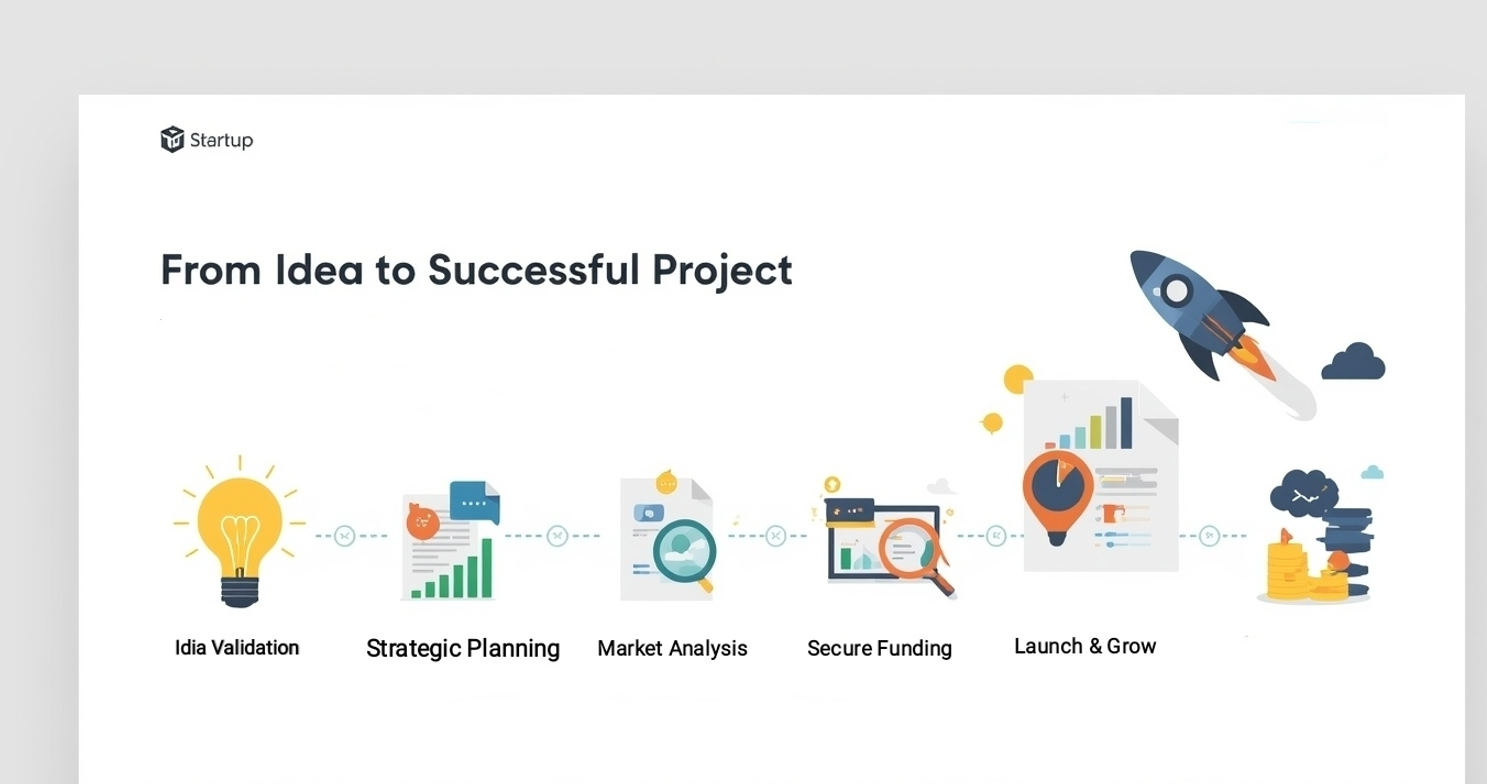Introduction:
Do you have an innovative business idea that you think could change the market, but you don't know where to start? Or are you a startup owner looking for a systematic way to transform your additional ideas into successful entrepreneurial projects that will double your business growth? Moving from an idea on paper to a business that thrives on the mud is a journey that requires a clear roadmap.
In this comprehensive guide, we'll walk you through the steps to transform your ideas into a tangible reality, targeting those looking to expand their investment portfolio.
Steps to Transforming an Idea into a Successful Business:
Step 1: Develop and Carefully Select the Idea:
No journey begins without a clear destination, and a successful business begins with a strong idea.
Here, it's not enough for an idea to be innovative; it must also be feasible and meet a real need in the market.
How to Choose Your Business Idea?
• Solve a Problem: Ask yourself: What problem does my idea solve? The larger and more disruptive the problem is for customers, the greater the opportunity.
* Realism and Feasibility: Evaluate your resources and technical capabilities. Can this idea be implemented with the available resources? This question is crucial for entrepreneurs.
* Innovation and Differentiation: Even if your idea exists, how can you deliver it better, faster, or at a lower cost than your competitors?
If your idea is technically complex, it's time to look for specialized companies to implement it and turn it into a prototype.
Step Two: Develop a Strategic Business Plan:
The plan is the compass that will guide your project throughout its journey.
A good business plan is what convinces investors and financing companies to join your project.
What should your plan include?
* Vision and Objectives: Where do you want your project to be in 5 years? Set SMART goals.
• Strategies: How will you achieve these goals? Marketing, sales, and operational strategies.
* Organizational Structure: Who will implement it? Define key roles and responsibilities.
* Timeline: Set a realistic timeline that clearly outlines the project's implementation phases.
Step Three: Market Analysis and Deep Competitive Understanding:
The operating room for any successful project is market research. Don't launch a product or service without a thorough understanding of your competitive landscape.
Elements of an Effective Market Research:
* Target Audience: Who is your ideal customer? What are their habits, problems, and purchasing power?
* Competitor Analysis: Who are the major market players? What are their strengths and weaknesses? How can you differentiate yourself?
* Demand Size and Trends: Is the market growing or declining? What are the latest trends in your industry?
* Opportunities and Threats (SWOT Analysis): Identify the opportunities you can exploit and the threats you should prepare for.
A thorough analysis helps identify new and promising investment opportunities in the current or adjacent market.
Step 4: Securing Financing and Financial Resources:
Financing is the lifeblood of any project.
Choosing the appropriate source of financing is a strategic decision that maintains the project's long-term stability.
Available Sources of Financing:
* Self-Financing (Personal Savings): Suitable for small, low-cost projects.
* Business Loans: From banks or financial institutions.
* Attracting investors: whether angel investors or venture capitalists.
* Grants and business accelerators: especially for innovative and entrepreneurial projects.
✓ Golden tip: Avoid a financing plan that puts you under significant financial pressure from the start. Balanced financing is key to sustainability.
Step Five: Launch, Follow-up, and Continuous Development:
You've reached the finish line... or, you could call it, the real starting line! Launching your project is just the beginning of a new phase of hard work.
Keys to Success After Launch:
* A Strong Launch Campaign: Use effective marketing strategies to promote your product or service.
* Monitoring Performance: You can't manage what you can't measure. Define key performance indicators (KPIs) such as sales volume, operating costs, customer conversion rate, and customer satisfaction levels.
* Evaluation and Adaptation: Periodically evaluate your project's performance. Be prepared to adapt to market changes and customer feedback.
* Hire experts:
Don't hesitate to contract with companies specializing in project management and operation to ensure work proceeds according to professional standards, especially if this is your first investment.
Ultimately, it can be said that continuous development is the secret to the survival of any successful project.



